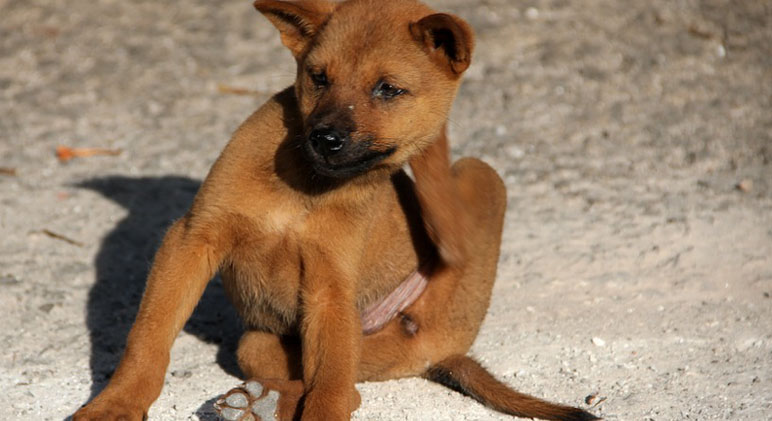My little Diego kept me up all night last night because he couldn’t stop itching and biting at his paws. Every few hours, I would wake up to the feeling of his squirmy body and the sound of his slapping tongue. The poor little guy looks miserable this morning (as do I because I’m exhausted)! As the seasons are changing, I know his intense itch is a direct result of allergies. In fact, I wrote an entire article about this a while back! But allergies aren’t the only thing that makes a dog itchy. Since I get a lot of emails from readers asking me why their dog has suddenly been struck by a case of the itches, I figured it’s time to write a post about it.
Top 5 Reasons Dogs Itch
1) Inhalant Allergies
Just as us humans can inhale allergens, so can little Fido. The most common causes are due to molds, grasses, pollen, and dust mites. While humans normally exhibit itchy eyes, runny noses, and respiratory symptoms, our canine kids typically show symptoms of itchy paws, face, or ears. Diagnosing allergies can be tricky, but your vet can do skin tests and blood tests to identify what your pup is allergic to. Although a true cure is unlikely, there are some things that you can do to help. Check out my list at the bottom of this article.
2) Food Allergies
Often times, external issues are a direct result of something going on internally. If your dog is allergic to a particular ingredient in his food–like wheat, corn, dairy, or certain proteins–then he may develop skin issues. In order to diagnose a food allergy, your vet will likely recommend putting your pooch on a special diet for a certain amount of time.
3) Fleas
Fleas are very small parasites that don’t have any wings and can jump up to eight inches high. They have four life stages: egg, larva, pupa, and adult. Once fleas leave their cocoons and become adults they look for a warm-blooded host (i.e. your pet) to feed off. Shortly after fleas eat their first blood meal, they breed and begin laying eggs in your pet’s fur. One of the main warning signs that your dog has fleas is intense itching or biting at the skin. Learn more about fleas here.
4) Ticks
Much like fleas, ticks look to cling onto a host. They belong to a species called arachnoids and are related to spiders, scorpions, and mites. Ticks don’t jump or fly and aren’t usually found in trees. Instead, they hide in low places like brush, bushes, or in the grass. Normally ticks sit and wait for an unsuspecting host to walk by as they hold onto the brush with their back legs and reach out with their front legs to grab on for the ride. They start low and walk up the body to get where they want to be. If a tick is on your dog, he will likely scratch at the area. Find out how to remove a tick from your dog’s body here.
5) Mange
Mange mites are microscopic insects that burrow into your dog’s skin to eat and live. As mange mites chew through your pup’s skin, they often cause inflammation, infections, and a whole lot of itching. There are various types of mange, but they can all cause mild to severe skin infections that leave your poor pup scratching.








